























































































Dear valued customers,
Like many boys and girls in the Caribbean, I grew up playing the many different forms of cricket — that is, street, beach, and backyard!
The thrilling sound of ball on bat — or ball loudly on Crix tin (the regular stand-in for wooden wickets)…! We would play in the rain uninterrupted; such was the joy we felt. The only disturbance was the inconvenience of cars wanting to pass on the roadway, which served as our temporary pitch.
I loved it!
Cricket holds a cherished place within Caribbean culture — the love for the game embodying the values of community, camaraderie, and pride.
It’s more than just a sport; it’s a cultural phenomenon that unites people of all ages and backgrounds.
Of course, for the maximum number of people to get the best from the game, it needs support. So we at Caribbean Airlines want to help build connections to the street game of our childhood by introducing “village cricket” in locations across the Caribbean.
Racing to our first boundary, Caribbean Village Cricket kicked off on 29, 30, and 31 March in Trinidad, with a thrilling T10 cricket tournament at three sites.
From there, the excitement ignited in Jamaica then on the fields of Guyana, with the final showdown scheduled for the Queen’s Park Oval in Trinidad on 5 May.
This was just the start — but like all good innings, we want to build to an even more impressive total. Keep watching…!
In addition to celebrating Caribbean culture through cricket, we’re proud to announce that Caribbean Airlines is once again the presenting sponsor for Reggae Sumfest Jamaica. Get ready for an electrifying line-up of stars, including Babyface, Beres Hammond, and Jada Kingdom, as we rock Montego Bay from 14–20 July.
Meanwhile, we’re also hard at work enhancing your travel experience. Our new baggage management system — powered by Load & Track Baggage Management Software — has significantly reduced mishandled baggage incidents, helping ensure your belongings arrive safely at your destination.
We’re also thrilled to share that, in the near future, we will have some exciting news about our network expansion into the French and Spanish-speaking Caribbean. Follow us on social media and our website (www.caribbeanairlines.com) to stay up to date with all the latest developments at Caribbean Airlines.
Thank you for choosing Caribbean Airlines. We appreciate your continued support and look forward to welcoming you back onboard soon.

Regards, Garvin


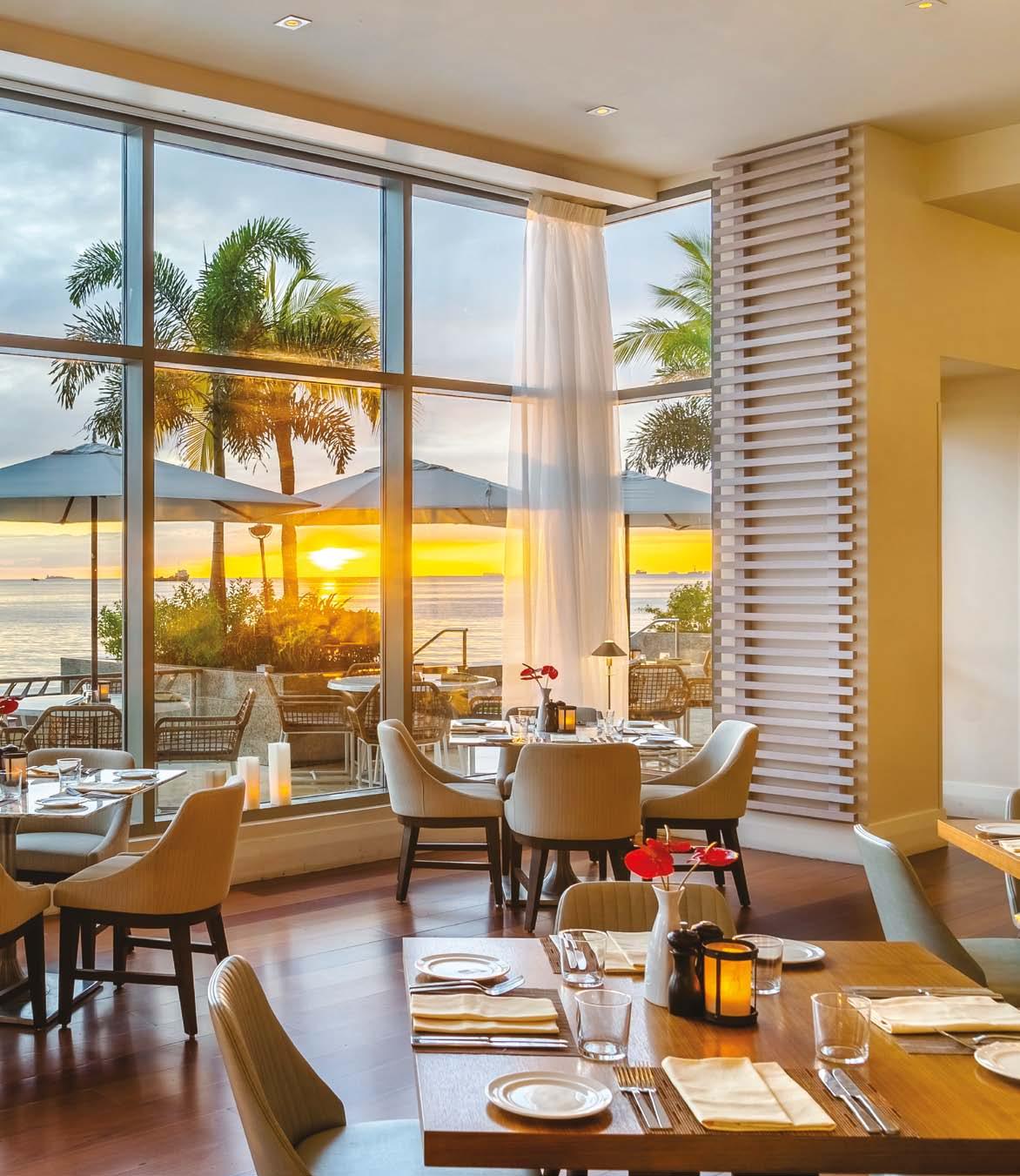
Come discover, celebrate and explore the many experiences you can have at Hyatt Regency Trinidad. Book a meeting room to discuss those business ideas; enjoy luxurious accommodation, special events, world-class cuisine, cocktails, a spa retreat or the infinity pool. Create your own experience.
For reservations, visit hyattregency.com
1Wrightson Road
Port of Spain, Trinidad


Book now!


Choosing a 4x4 vehicle just got a lot easier. Because nobody but Jimny offers such a superbly balanced combination of authentic off-road ruggedness and light, nimble, manoeuvrability. What’s more, the new 5-door model gives you expanded carrying capacity and truly comfortable seating for four adults. Scan the horizons and you will see - there is nothing else like it on Earth. Visit www.suzukicaribbean.com
182 • May/June 2024
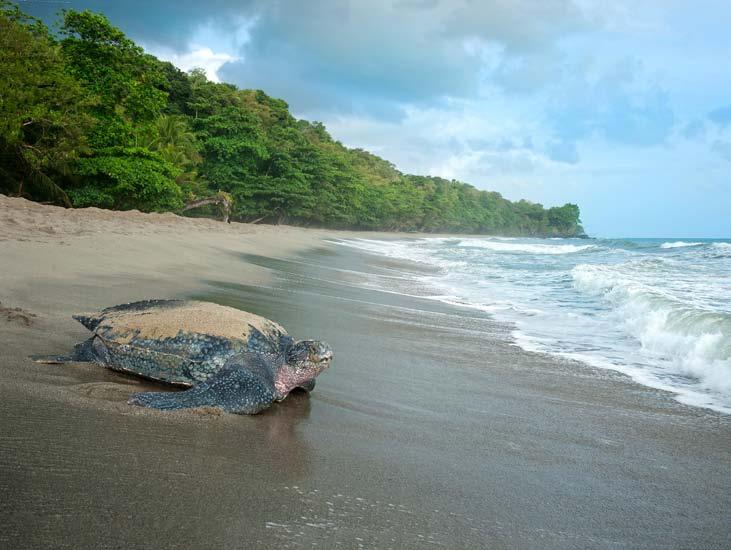
14 EscapE Bliss awaits on the water in Antigua & Barbuda
16 EvEnt buzz
Festivals and events around the region
22 scrEEn buzz
Jonathan a li talks to Cuban filmmaker Luis Alejandro Yero about his film Calls from Moscow
24 art buzz
On view: Trinidadian Chris Cozier at MoMA in New York
26 Music & book buzz
Reviews by n igel campbell and s hivanee ramlochan
28 thE gaME
Out Of this wOrld
The anticipated Cricket T20 World Cup this June, co-hosted by the West Indies and the United States,

is a potential game-changer, writes s heldon Waithe
32 portfolio Mehndi stOries
Dr gabrielle h osein explores how the Indian art of mehndi uniquely commemorates the legacies of Indian indentured labourers who arrived on Caribbean shores 186 years ago
34 snapshot three island sOngbirds
n igel campbell profiles three talented Caribbean singersongwriters: Grenadian Sabrina Francis, Barbadian Kellie Cadogan, and British-Trinbagonian Kye De Vere
38 on this Day the great Chevalier
Born in Guadeloupe to a white French plantation owner and an enslaved Senegalese mother, the life of Joseph Bologne was nothing short

of extraordinary. On the 225th anniversary of his death, James ferguson revisits the story of the unique musician, fencer, and soldier that history almost forgot
48 puzzlEs & brain tEasErs


Cover Jamaican all-rounder andre russell celebrates taking a wicket during the West indies’ match against australia at the 2019 icc cricket World cup in the united kingdom Photo pa images/alamy stock photo
An MEP publication Caribbean
Editor Caroline Taylor
Designer Kevon Webster
Editorial assistant Shelly-Ann Inniss
Production manager Jacqueline Smith
Finance director Joanne Mendes
Publisher Jeremy Taylor
Business development consultant Halcyon Salazar
Business Development Manager, Tobago and International Evelyn Chung T: (868) 684–4409
E: evelyn@meppublishers.com
Business Development Manager, Trinidad Tracy Farrag T: (868) 318–1996
E: tracy@meppublishers.com
Media & Editorial Projects Ltd.
6 Prospect Avenue, Long Circular, Maraval 120111, Trinidad and Tobago T: (868) 622–3821/6138
E: caribbean-beat@meppublishers.com
Websites: meppublishers.com • caribbean-beat.com
Printed in Trinidad & Tobago by SCRIP-J
Website: www.caribbean-airlines.com





his morning I got up at 5:30am, completing my usual loop: Soufriere, then the mountain village of Galleon, and back to my hotel (Jungle Bay, Dominica) for a delicious
breakfast and a spectacular view of the coastline. Not a bad routine for a middle-aged man whose navel string is buried near a humble wooden shack in the nearby mountain village of Bellevue Chopin over 60 years ago.
When I was about six, my young parents uprooted their five little boys and relocated to a tenement in Grove Place village in St Croix (United States Virgin Islands). Fidel Castro had nationalised American investments in Cuba, and investors were flocking to the safety of the USVI instead.
Like many migrants, my parents were extremely cash poor but rich in hope and expectation for their children. They were willing to risk it all so their descendants could enjoy the opportunities they could never attain in their own lifetimes.
One morning, I heard a radio host say something that hit me like a bullet. “We Black people cannot own hotels and airlines … why don’t they allow us to own some airport shops where we could sell rum and cigarettes to the tourists?”
What is this man saying to my five children, for whom my parents and generations before them sacrificed so that my offspring and descendants could do or be or own anything they were willing to work hard enough for?
I called into the radio station and committed the cardinal sin of contradicting the popular host, especially against a position that provided the community a comfortable excuse for not even trying. “You own a hotel?” he asked. My answer was no. “You own an airline?” Before I could answer, he bellowed, “Then shut up and call me back when you own a hotel or an airline!” It was just what I needed.
Timing is everything. I returned to the USVI at about 22 after going to university in the US, put down $3,000 on a half-acre plot of residential land, and started a cistern cleaning and building maintenance company.
Every house in the USVI had a rainwater collection cistern. This had to be a good business, I thought ... until I went to the bank
for a loan and the officer asked why no-one else was doing it if it was such a good idea.
Around the same time, a friend called to ask if I could show my plot of land to her client. After looking at it, the gentleman asked how much I was selling it for. I was taken aback, and explained it was not for sale. He offered me $25,000 cash — and that’s the day I started a lifelong career of buying, developing, and selling real estate.
The cistern cleaning business proved to be a good idea, especially after a bacteria crisis caused the federal government to mandate the cleaning of water cisterns in all public housing. And contrasted against the abject horror of hurricanes are the opportunities provided by the post-disaster acquisition, rebuilding, and resale of properties.
The combination of these businesses enabled me to attain a rich quality of life. But I still felt that something was missing.
In late 1995, a friend from a USVI-based financial brokerage firm asked for assistance with an introduction to the newly elected Dominican government. Dominica had recently lost its subsidised banana trade with Europe and Great Britain, and a new political party led by a relatively unknown banana farmer swept into office promising to revive the banana trade.
However, this was an impossible feat. The electorate was getting impatient, and the politicians needed to show that they were doing something. The prime minister urged me, and young people like me, to come home and invest in the island where I was born. He also asked me what kind of business I thought might do well in Dominica.
My first thought was my fifth grade class trip to a national park campground in St John, USVI. I had the most vivid memory of that trip, and always dreamed about owning a campground. Dominica’s dense rainforest was even more lush than St John’s. My second thought was of the talk show host’s fateful words. Maybe the universe was telling me that it was time to put up or shut up. And the rest, as they say, is history.
Sam Raphael is a developer, entrepreneur, and owner of the Jungle Bay Resort, Dominica.


Fresh sea breeze. Sunshine on your face. Peace and quiet while resetting and being rejuvenated on calm pristine waters — the silence and stillness punctuated only by the occasional bird soaring through the air or diving for food. It might be easy to feel like everything is worlds away. Another reason to love the Caribbean. Our paradise. Our home. If you could sail anywhere, where would you go? What would you take? And how would it make you feel?
shelly-Ann Inniss on the major festivals and holidays across the region this May and June

Start your May off right with classic jazz and world rhythms from a multitude of genres at the renowned st Lucia Jazz & Arts Festival (30 April–12 May), set against the iconic backdrop of the Pitons.
The arrival of indentured labourers to the Caribbean from India is observed across the region — often called Indian Arrival Day — with traditional foods, re-enactments, dancing, and other commemorations in Grenada (1 May), Guyana (5 May, public holiday), St Lucia and Martinique (6 May), Jamaica (10 May), Trinidad & Tobago (30 May, public holiday), St Vincent & the Grenadines (1 June), and Suriname (5 June).

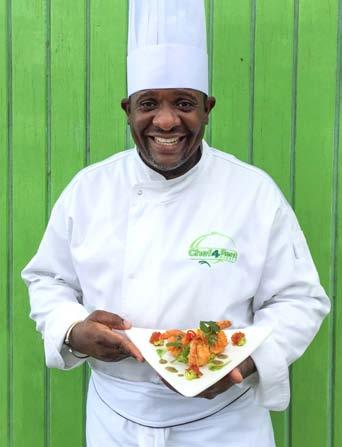
Meanwhile, Dominica is a hub of cultural activity this May. Each Saturday, explore stunning mountain peaks, waterfalls, rivers, and rugged terrain along the Waitukubuli National Trail at hike Fest. Don’t miss Jazz n’ Creole (5 May) and the month-long Dominica Festival of Arts (DoMFEsTA), with incredible performances and cultural showcases.
Indulge your palate at premier restaurants and eateries during Antigua & Barbuda restaurant Week (4–19 May). Cheer on anglers or weigh your catch at the Antigua & Barbuda Fishing Tournament (16–19 May). Savour the lively atmosphere at Barbuda’s Caribana Festival (20–24 May). And if you have a special someone in your life, be sure to check out opportunities to celebrate love during romance Month (June).

Steep descents make for some of the most thrilling rides at MTB Madness (4–5 May), also known as the Tobago Bike Festival. The Cross Country Races welcome kids, newcomers, and adults on the first day, while experienced riders earn bragging rights on the final day at the threestage Enduro Races.

Caribbean cinema is on show at the Third horizon Film Festival (9–12 May) in Miami, and the hairouna Film Festival (24–25 May) in St Vincent & the Grenadines, inspiring and honouring our diaspora’s talented and passionate filmmaking community.
Some of the top folk performers in Celtic music, including World Champion Pipers Willie McCallum and Roddy MacLeod, perform at the Barbados Celtic Festival (16–19 May). And more glorious music from local, regional, and international acts makes a heavenly impact at the Barbados gospelfest (26 May–2 June).
Leatherback nesting season (March–September) reaches its peak at this time of year. Enjoy seeing both nesting mothers and baby hatchlings as they emerge several weeks later. It’s magical! Other sea turtle species nest across the region, often under the watchful eyes of conservation groups and turtle-watching guides.
At the grenada Chocolate & rum Festival (17–19 May), channel your inner Willy Wonka as you meet sustainable cocoa farmers, dance the cocoa, make your own chocolate-inspired dishes, and discover the fascinating realms of chocolate and rum.
There’s tonnes of action down in Guyana at this time of year, from Drag racing at south Dakota (19 May), to the ICC Men’s T-20 World Cup (2–8 June, with the semi-final on 27 June), and delectable dining through restaurant Week (21–30 June).


After a two-decade hiatus, sashi (23–26 May) returns to Ocho Rios in Jamaica with a highly anticipated lineup of superstars, including more than a dozen top R&B, hip-hop, afrobeats, and reggae artists, plus Sashi’s signature fashion show.
The wait is finally over for the biggest tarmac rally on Barbados’ intricate road network. Scores of motorsport enthusiasts assemble for the rally show and King of the hill “shakedown” (25–26 May), which is used to seed the running order for 20 special stages at the main rally Barbados event (31 May–2 June).


This June, the West Indies makes history by co-hosting the ICC Men’s T-20 World Cup (1–29 June) with the United States, featuring matches in Antigua & Barbuda, Barbados, Guyana, St Lucia, St Vincent & the Grenadines, Trinidad & Tobago, and in three US states (Florida, New York, and Texas). Learn more on page 28.

The Eleuthera Pineapple Festival (7–8 June) in The Bahamas is a chance to participate in pineapple eating and cooking contests; see fire dancers; experience the Junkanoo rush; and play some traditional games.
There’s more sporting action in Tobago in early June as triathletes of all ages and levels of experience compete at the rainbow Cup Tobago (8 June).
Up north, enjoy the Toronto Jazz Festival (21–30 June), and Pride Toronto (28–30 June), featuring “a Dyke March, a Trans March and the Toronto Pride Parade”.
As June comes to a close, A-list musicians headline the st Kitts Music Festival (27–29 June) with gospel, soul, soca, jazz, R&B, blues, reggae, and more; while, in Trinidad, T&T Bioblitz (29–30 June) sees scientists, students and nature-lovers surveying the biodiversity in and around beautiful Guayaguayare.

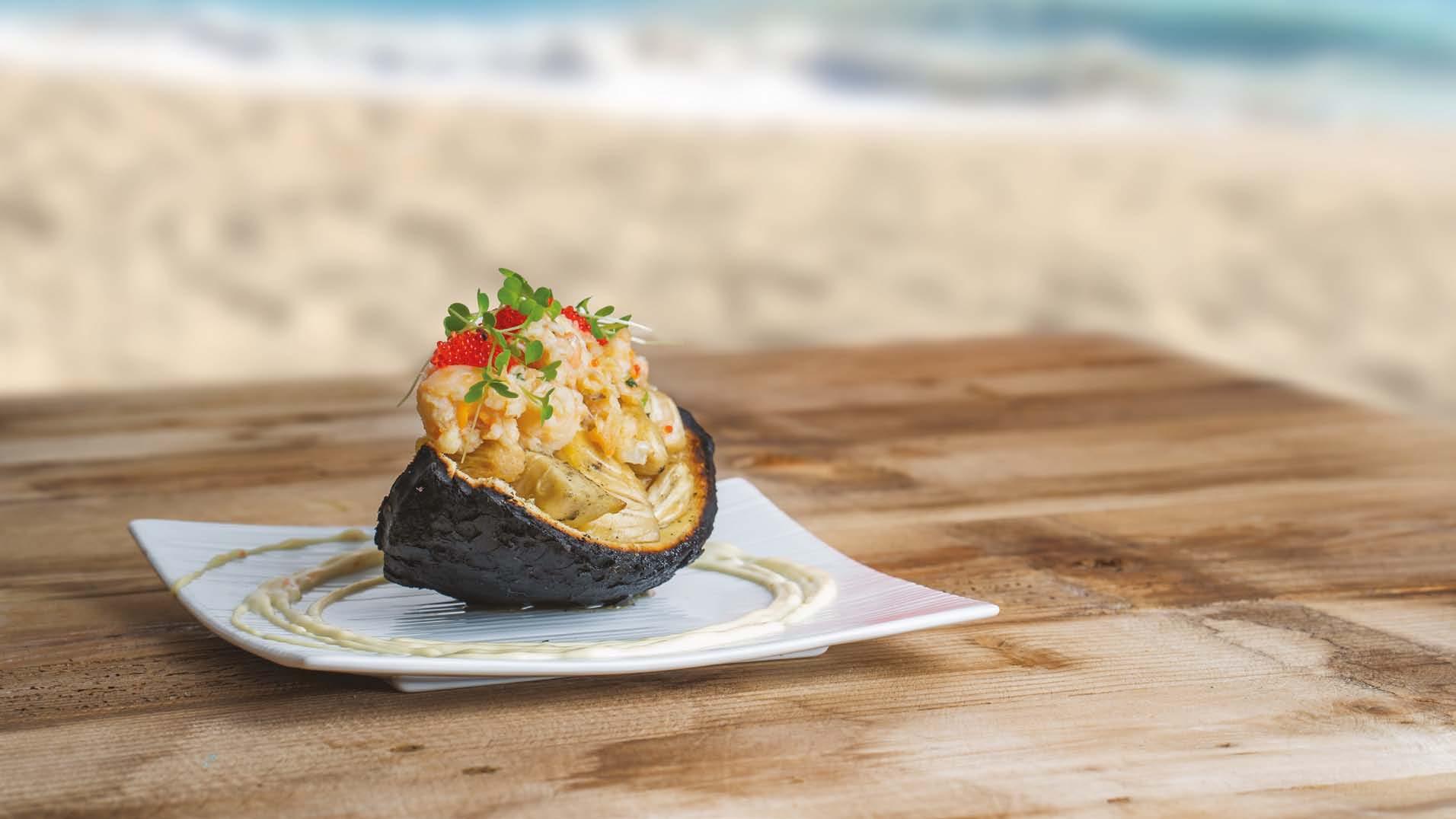

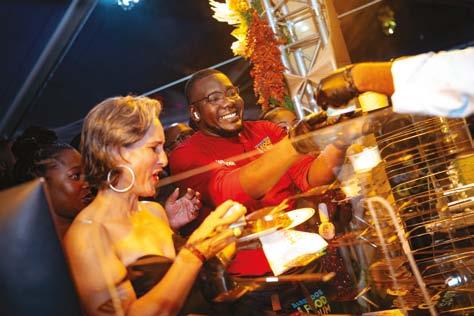
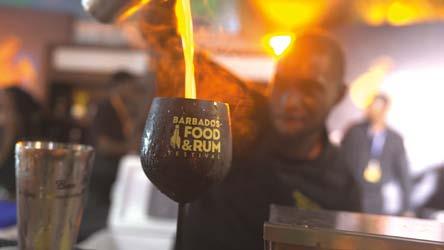

“The idea was to create a space where we could play amid hostility”
In 2020, the Cuban filmmaker Luis Alejandro Yero found himself stranded in his Havana apartment, confined like the rest of the world due to the pandemic. Some weeks later, he read an article in a foreign newspaper about the difficulties of Cuban refugees stranded in Moscow.
Deeply moved by their plight, Yero spent 18 months researching their situation, getting to know some of them online before he was able to fly to Russia to film there. Arriving in the freezing Moscow winter, Yero and his compatriots soon found themselves facing another challenge: the possible invasion of Ukraine.
Shot in a specially rented apartment, Calls from Moscow fabricates a space where four Cuban men — like the filmmaker, all young and queer — recreate some semblance of what their lives as undocumented migrants is like.
For Dariel, Darryl, Eldis and Juan Carlos, this means much solitude, and time spent on their phones connecting with relatives back in Cuba. Yet it also means a measure of freedom to express themselves creatively and imagine what a future beyond their precarious present might be like. Jonathan Ali spoke with Luis Alejandro Yero about his timely and compassionate film.
The film is very intimate; you achieve a remarkable proximity to your subjects. Several common elements made complicity very easy. This kind of fraternity arose immediately because we had similar ages. Also, a common origin in Cuba. At the same time, we are all queer. So, the idea was to create a space where we could, above all, play amid that hostility: during the Moscow winter at minus 20 degrees, amid the panic with COVID or crossing paths with the Russian police in the street, amid the alarms about a possible invasion of Ukraine by Putin. Filming became a form of resistance, a way of feeling a vitality between all that desolation.
you forewent having your subjects provide traditional testimonies about themselves.
Yes, completely. The interview is a cinematographic approach that very few filmmakers know how to work in a valuable and surprising manner. In my case, I have always preferred to

observe. Although those who are filmed are aware of the camera, I believe that through careful observation, one can find inconsistencies, paradoxes, or the most profound revelations. Also, when you observe someone’s gestures, there is more freedom to make your idea of who that person is. This requires more attention, and more effort to read and discover someone’s deep truth.
In addition to hearing your voice on calls with your subjects, you also appear in the film. Why was it necessary to put yourself in front of the camera?
I have always been very shy about putting myself in front of the camera, mainly because there is not much to say or show about myself. In Calls from Moscow, creating the dispositif of the fake home brought the need to make myself a character in the narrative. It would be a scam if we had hidden that the house doesn’t belong to the protagonists. The place was created by us. However borderline the genre of the film may be, I am always clear when I start and work from a documentary gesture, which is the case here.
one of the subjects returns to Cuba at the film’s end, but it is implied that he has an unknown fate. Were you finally able to contact him? have you kept contact with the others?



Unfortunately, to this day we haven’t been able to contact Daryl. I talk to the rest of the guys regularly. Eldis returned to Cuba a couple of months after the shooting; Dariel and Juan Carlos are still in Russia. Their situation has certainly not improved much. Informal jobs come and go, allowing them to live with minimal security. They are still in their 20s, they are young, and — for the moment — their vitality allows them to cope with the
harshness of their irregular migratory status. They always tell me how they prefer the harshness of life in Moscow to the tedium and collapse of Cuba. Of course, there is nothing ideal about this situation.
Calls from Moscow (2023)
Director: Luis Alejandro Yero
Cuba
66 minutes
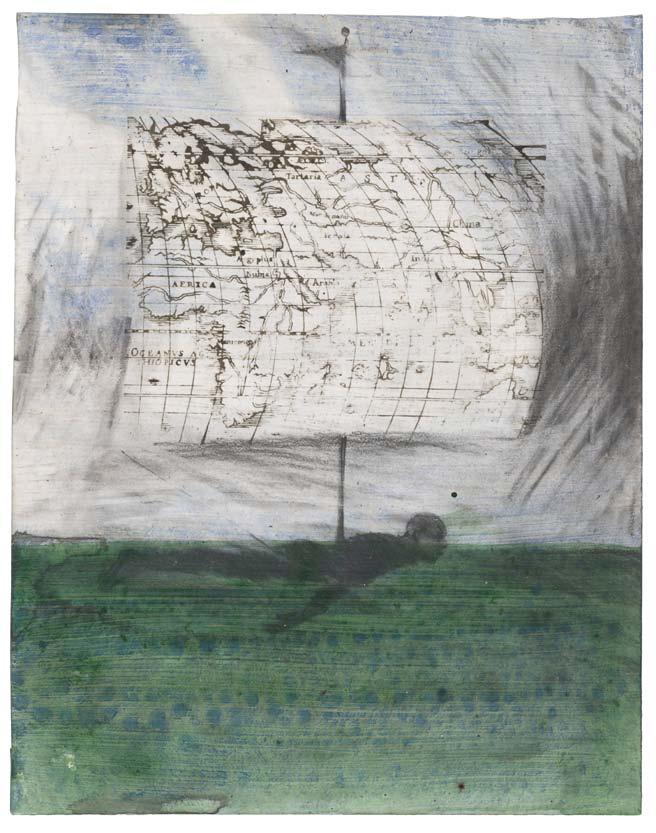
Trinidadian artist, curator and writer Christopher Cozier — profiled in depth by Caribbean Beat back in 2001 — is joining the ranks of other premier Caribbean artists to exhibit at the Modern Museum of Art (MoMA) in New York, home to some of the most distinguished and influential works in the world. It’s a landmark achievement.
Cozier’s Tropical Night (2006–2014) series consists of 268 individual drawings of his personal migration story, which began in 1983 when he left Trinidad & Tobago to study in the United States, continuing with other journeys internationally and regionally.
One of the pieces is a Haitian five gourde coin from Cozier’s first trip to Haiti, about which he says: “the coin was astonishingly smooth and the figures of the revolution had become so worn down that they looked like shadows or silhouettes — visible but unrecognisable.” Cozier pondered what that said about the use of these figures within national narratives and the current political reality.
— Shelly-Ann InnissFrom Christopher Cozier’s Tropical Night (2006–14): 3 of 268 sheets with acrylic, ink, coloured ink, pencil, and coloured pencil on paper, some with stamped ink, stencil, solvent transfer, and cut-and-pasted coloured and painted paper, 9x7”. Digital image copyright MoMA, NY, Latin American and Caribbean Fund and Fund for the Twenty-First Century
Courtesy and copyright Christopher Cozier
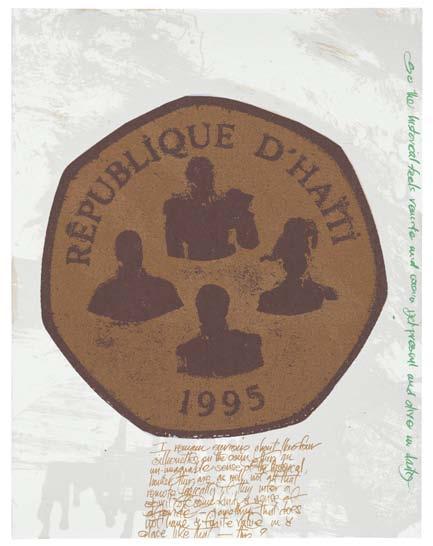
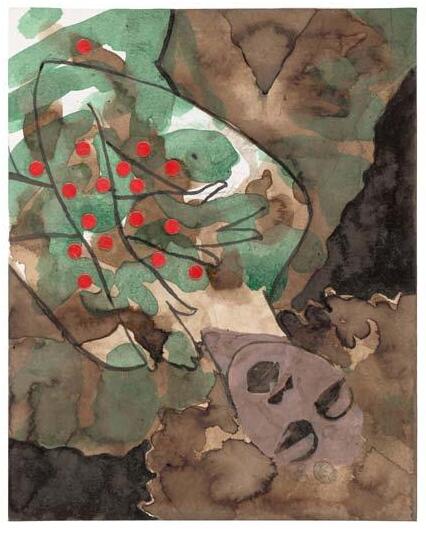



bunji garlin
Ayl’Ian (Bad Beagle)
Bunji Garlin is a soca music wordsmith who has no equal. The music — relegated almost exclusively to accompanying Caribbean carnivals — gets a major lift when Bunji uses his broad vocabulary and the rhythm of those words to make prosodic magic in a genre that has normalised repetitious exhortations to jump up. He gets high marks rhyming the word “mitochondria” with “conqueror”. Polysyllables work cleverly, riding eighth notes at 130 BPM. Be assured, though, that this album has a compilation of road march and fete favourites from Trinidad Carnival 2024 melding seamlessly with the tempo and heat of a slew of new songs — produced by regional and international producers — that create the possibility of breaking the silo-effect of soca as carnival music. His use of metaphor and similes that make one smile, and impressive descriptive writing (“CLASSIC LIKE”) and narrative writing (“Looking Over”) are what make Bunji one of the best ever.

romain virgo
The Gentle Man (VP Records)
The record label describes Romain Virgo as a singer with “one of reggae’s most soul-stirring voices”, and a recording career oeuvre that spans classic reggae to modern innovations. This album captures that whole range adequately. Reggae — at one time considered by some as a circumscribed mono-culture and monogenre — has grown branches that have critically moved the music and songs to new places (literal and digital). Album opener, “Been There Before”, straddles modern reggae and soul music, signalling that what listeners are in for is an evolution of the sound of Jamaica, as a whole. Virgo is in a revealing mode, singing about relationships (good and bad; past, present and wished-for), celebrating women (a public appreciation to every mother, and Like I won a hundred million / I got a good woman), and reflecting on his life to find teachable moments. Collaboration tracks with Masicka and Patoranking are winners.

toni sancho
Everybody Leaves! (Blue Daisy Records) • Single
Tabanca is a hell of a thing. That word describes the jilted feeling one gets after a breakup and — according to Trinidad-born, UK-based singer Toni Sancho — that was the catalyst for a series of songs. This one is the fourth to be released, eventually leading to an EP. Loss and depression are topics that litter the landscape of sad songs (Cross my heart and hope to die / I’d swore by now I’d be alright, but / Everybody leaves). But what counters that down feeling here is a smart melody, and hip nearly minimalist accompaniment that sparkles with harmonies that resolve from minor to major. Sancho has described her music as “heartbreaking, vulnerable and liberating” — a progression that leads to hope. Sadness leads to acknowledgement that not all relationships are eternal. The Guardian (UK) described Sancho’s voice as “unshowy yet fabulously expressive, with a velvet dagger for a tongue”. And that allows her honesty to shine through here, uncluttered.
 gary hector
gary hector
Waitin’ Around To Go Viral (self-released) • Single
This new single from the Trinidadian rock ‘n’ roll outlaw precedes his upcoming second solo album Memphis Medicine, and Hector continues mining influence and inspiration from country music styles, and broader Americana genres. This little ditty takes us on a journey of a restless soul, Johnny, who we sense is dissatisfied in his relationship with his partner, Venus. Ennui gives way to defeat as listeners get an elucidation of the emotional arc from the cast of characters he interacts with — disinterest, dismissal, and his ultimate disappointment. An odyssey in four verses, such is the compact nature of country music songcraft, and Hector has it down pat. The trope of the cellphone content virality as a measure of a distorted reality is enlightening, as is his use of droll commentary, simple melody, and a nod to the sonics of southern music without veering into mimicry. Hector’s continued movement into this genre works well here


Ocean stirrings by Merle Collins (Peepal Tree Press, 440 pp, ISBN 9781845235529)
Longlisted for the 2024 OCM Bocas Prize for Caribbean Literature, Grenadian Merle Collins’ Ocean Stirrings creatively envisions and animates the journey of Louise Langdon Norton Little, mother of prominent civil rights leader, Malcolm X. Collins’ narrative is speculative in the most honourable of senses, guided by a wealth of research and inquiry. From these pages, Little’s own mettle as an activist and agitator for meaningful change shines forth. Treading with both imaginative and methodical steps, the novel follows the actual progression of its subject’s life — from her childhood and adolescence in Grenada, adulthood in the United States and Canada, culminating in her unjust incarceration in a Michigan psychiatric institution. Above all, this is a richly empathetic rendering in fiction of a real-life person whose story remained almost entirely unsung. Ocean Stirrings anchors her history before us, asking whose voices are allowed to resound.

what start bad a Mornin’ by Carol Mitchell (Central Avenue, 272 pp, ISBN 9781771683838)
Amaya Lin, the protagonist of St Kitts & Nevis born Carol Mitchell’s debut adult novel, has pinned her life carefully in place: to be a consummate mother, wife, niece, and businesswoman. What Start Bad a Mornin’ shows what secrets and the past’s spectres do to even the most manicured of lives, triangulating events in Trinidad, Jamaica, and the United States. In gripping prose, Mitchell upends even the most innocuous expectations, piercing holes in the tidy narratives of “good immigrants” and “dutiful women” perpetuated by mainstream Western media. The novel asks provocative questions about the state of memory, prompting readers to contemplate just how much of their own pasts they’re comfortable with facing. Exploring dark histories, Amaya reflects, would be like strolling on a beach strewn with sea urchins, unpleasant surprises that were potentially treacherous unless you stopped to extract the spines

belmont Portfolio by John Robert Lee (Peepal Tree Press, 64 pp, ISBN 9781845235659)
To reflect on an island — St Lucia — across collections of poems: John Robert Lee has done this work with true lyrical attentiveness. In his newest offering, Belmont Portfolio, St Lucia remains paramount, rooted in the writer’s devotions to beauty and its ephemerality. The poems speak plain truth that nothing pulchritudinous persists forever, but that the beauty of the land and its people linger beyond ordinary sight. The doors of Lee’s poetics are open and generous. Embedded in these verses are remembrances of Derek Walcott and Kamau Braithwaite. With Christian fealty that centres each poem as an act of ruminative service, the poet draws on progress. This is the pilgrim’s progress, making his way through a Caribbean land: at once intimately aware of its history and daunted by an impossibility to predict its future patterns. Of such honest fidelity are these poems hewn.
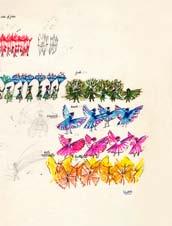
Masman by Peter Minshall (The Minshall Mas Foundation, 96 pp, ISBN 9789768341037)
A pocket-sized wonder of a book, Peter Minshall’s Masman illustrates in print a speech presented by the indomitable Trinidadian arts veteran in 2000. Spectacularly intuitive in its design — doubtless an homage to the award-winning installations made by Minshall over the decades of his practice — reading Masman is like being in raucous conversation with the artist himself. The accompanying illustrations chosen to punctuate and embroider the speech feel as judiciously chosen. In black and white ink sketches, worlds of creative embodiment fairly leap from their paper moorings. Young and less young Caribbean artists of every medium might do well to cleave to this tiny illumination, in word and drawing, of what art is for — why we make it, how we do it, how we might continue doing it in this, our most uncertain and perilous age. This work is a miniature treasury, hummingbirdesque.
The Caribbean has a long history of hosting the best cricket teams in the world for a chance to claim sporting supremacy. But, writes sheldon Waithe, the Cricket T20 World Cup this June — co-hosted with the United States — is a very different ball game
Bats and balls, big and bold. There is nothing like cricket in the Caribbean. And when you add the explosivity of the T20 format, together with the ultracompetitive nature of a World Cup, the sparks are bound to fly — just like the many sixes cricketing stars will hit into the stands.
This June, our Caribbean region will be eager to capitalise on our proud history in the sport (including as T20 World Champions in 2012 and 2016) and our legacy of players that redefined the way the game is played.
Dwayne “Champion” Bravo, Chris “Universe Boss” Gayle, Sunil Narine, and Andre Russell are just some of the household names that became the most sought-after cricketers for T20’s global franchise structure.
The ICC (International Cricket Council) is also keen on showcasing the legendary festive nature of cricket crowds in the Caribbean for two main reasons. The revelry of the fans — with all their colour, noise, and unique characters — will resonate with global television audiences, enhancing an already celebratory event. That, in turn, can help the game penetrate new markets — hence co-hosting the event with the United States.

The matches in Dallas (Texas), New York, and Lauderhill (Florida) should attract the major cricket nations’ diaspora living in the US (take the mouth-watering India vs Pakistan encounter on 9 June in New York), but also introduce the delights of the game to a whole new fanbase.
No effort has been spared in marketing the event, with a mix of the traditional — beach cricket in idyllic settings, and colourful carnival costumes — and revolutionary images of cork balls raining down onto yellow cabs in Times Square.
The 2024 World Cup is a golden opportunity for the sport, both regionally and globally.
“We strategically decided to bid for the men’s T20 World Cup jointly with the US because we wanted to grow the sport in our time zone, which we believe is crucial to our long-term survival,” explained Cricket West Indies (CWI) CEO Johnny Grave. “We’ve got a huge diaspora in North America, and with the USA being the most developed sports market in the world, the more we can reach out to it, the more we are likely to attract high-value sponsors and broadcasters. We believe we made a good decision.”
With 20 teams vying for glory — playing across St Vincent, St Lucia, Antigua & Barbuda, Barbados, Guyana, Trinidad & Tobago, and the three aforementioned US venues — there is plenty of scope for travelling fans to immerse themselves in the West Indian way of watching cricket.
Horns, flags, coolers are the order of the day. This is not a gentle clap accompanied by a “good shot” remark; it’s a jump up and rave, accompanied by thunderous music and a boisterous “Shot, boy!” Matches are four-hour parties, with the afterparties erupting into nearby streets and watering holes — national colours adorning painted faces (even bodies!).
It’s infectious — as is the good-natured ribbing or “picong” when a wicket falls, or a catch is dropped. Fans won’t hold grudges for long — how can they amid all the merriment, and when the fierce cricket played on the pitch is accompanied by (mostly) friendly rivalries in the stands?
Ideally, this World Cup will be a massive celebration of Caribbean culture as well as global cricket — a partnership that should reflect the tagline of region’s T20 franchise tournament, the Caribbean Premier League: “the biggest party in sport”.
With 20 teams vying for glory there is plenty of scope for travelling fans to immerse themselves in the West Indian way of watching cricket



West
So which nation will be partying at the end of it all, after the alphabet of nations from Afghanistan to the West Indies have laid it all on the line, pursuing the right to be deemed world champions?
Consistency will be the key to world domination, together with an understanding of varying conditions from dry spin-friendly surfaces to green tops that favour pace. Add the potential unpredictability of new pitches in the US and, as ever, the cricket played will require equal doses of brain and brawn.
Four groups comprising five teams will form the first stage, before the top two nations in each group move into the Super Eight phase. There, they will be split into two groups of four, with the top two teams in each group progressing to the semifinals. It means that any team contesting the final in Barbados will have played nine matches within four weeks — delightful for the spectators, arduous for the players.
The top four ranked nations — India, England, New Zealand, and Australia — rightfully take their place as favourites, with stars such as Surya Yadav and Phil Salt ready to shine. Pakistan and South Africa also have strong squads.
The hosts cannot be discounted. “Home advantage is something that is real,” says Windies World Cup winner Samuel Badree. “Our players would know the conditions here much better than those who are coming in ... In 2023, [the team] won away to South Africa, they won against India in the region,
and then they won against England towards the back end of 2023. We’ve always been good at T20 cricket; it’s always been our strongest format, and I see no reason why this team cannot go all the way.”
Should captain Rovman Powell — and his fiery players such as Nicholas Pooran and Shai Hope — lift the trophy to send the region into rapture, it will be the first time that a host nation has won the T20 World Cup. No pressure, then!
Ideally, this World Cup will be a massive celebration of Caribbean culture as well as global cricket
There could also be a surprise package — perhaps in the form of Ireland, Namibia, or the Netherlands turning in giant-slaying performances that propel them into the Super Eights.
It’s a grand party, with an invitation extended to the entire globe to come and enjoy T20, the Caribbean way. The region that gave cricket music, revelry, cheerleaders, noise, and some of the most flamboyant players ever is hosting the World Cup. The result can only be out of this world. n
The ICC Men’s T20 World Cup takes place 1–29 June, 2024.


Through a special collaborative project, Dr gabrielle hosein explores how the Indian art of mehndi uniquely commemorates the legacies of Indian indentured labourers who arrived on Caribbean shores some 186 years ago
Photography courtesy Abigail hadeed
I’ve always loved mehndi . For anniversaries or birthdays, I’d look forward to seeing the swirls and flower designs turn red and then brown on my hands, arms, and feet. The word itself comes from the Sanskrit mendhika , referring to the red dye released by the henna plant. “Henna”, in turn, originated from hina — the Arabic name for the Lawsonia inermis plant.
Today, the dye is transformed into temporary body art by both Muslim and Hindu
women to bring good luck and symbolise women’s beauty and femininity.
While mehndi is part of bridal preparations for marriage, it has been embraced by modern, globalised fashion, and in the Caribbean is also worn for Divali and even Carnival. In India, there have always been diverse styles of using the dye to create stains in dots and patterns.
Mehndi came with Indians’ arrival as labourers who were indentured or contracted between 1838 and 1920 to work on Caribbean sugar plantations
for periods of five or more years. Half a million Indians were brought by the British, Dutch, and French from areas such as Uttar Pradesh, Bihar, and Madras to work in dehumanising, punitive, and exploitative conditions.
For women, who were sometimes about one quarter of these migrants, there was opportunity for greater economic and sexual autonomy than in India — at the same time as there was multifaceted and continuous subordination and violence.
Indian survival now sees commemorations in Grenada (1 May), Guyana (5 May), St Lucia and Martinique (6 May), Jamaica (10 May), Trinidad & Tobago (30 May), St Vincent & the Grenadines (1 June), St Kitts & Nevis (3 June), Suriname (5 June), and Guadeloupe (25 December). The story of Indian indenture is deeply Caribbean.
How can we continue to document the legacies of indenture which we have all inherited? I turned to mehndi as a traditional feminine artform to create a visual archive or imaginative way of documenting such history — a project that would become The Botanical Afterlife of Indenture: Mehndi as Imaginative Visual Archive.
I drew on the writing of scholars Dr Kumar Mahabir and Professor Brinsley Samaroo on the seeds, plants, fruits, and flowers brought by indentured Indians to the Caribbean. Think of mangoes, guavas, pomegranates, string beans (bodi ), moringa (saijan), pumpkin, ganja, rice, sapodilla, turmeric, ginger, bitter gourd ( caraillee ), curry plant, tamarind, cucumber, spinach (bhaji ), and much more.
This flora is also typically associated with sustenance and kitchen gardens — and therefore with women’s historical responsibilities for care, and indentured Indians’ family and cultural survival.
I collaborated with Abigail Hadeed (an artist/photographer who has been documenting Caribbean culture for over 30 years), mehndi artist Risa Raghunanan-Mohammed, fashion designer Chandra Rattan, theatre set designer Geneva Drepaulsingh, and jeweller Steven Weaver.
We created original mehndi designs of botanicals from India, and combined them with those from Africa and those indigenous to the Caribbean. We also used mehndi to record post-indenture,
rural life, which has never been done in our region.
It was necessary to tie indenture to more than the image of sugar cane, as much as it was essential to create designs that could make all bodies — across difference — feel beautiful. Natural dye highlights an ecologically sustainable tradition that has become ever more urgent amid the climate crisis and its effects.
As mother of a Dougla — or mixed Indian and African — daughter, I also dreamed that Ziya would be able to see how legacies of indenture are hers as much as mine. She is connected to it through landscape and culture as much as through family and love. Our landscape itself is a living, botanical archive of the afterlife of Indian indenture. It surrounds her as she makes her own place in it. As do I. As do we all. n

Look out for launch and exhibition information on The Botanical Afterlife of Indenture: Mehndi as Imaginative Visual Archive as the region celebrates Indian-Caribbean culture and heritage in May and June.

nigel Campbell profiles three talented Caribbean singer-songwriters: Grenadian Sabrina Francis, Barbadian
Kellie Cadogan, and BritishTrinbagonian Kye De Vere
Hundreds of travel writers have come to the Caribbean over the decades to describe the region to international audiences — to affirm or condemn our aesthetic and landscape. Not so many music writers have combed our cities, towns, and beaches looking for the essence of how we sing, how we dance, how we live.
They have mainly focused on the music that propels island carnivals; provides sanctuary for minds inspired by Bob Marley, Rastafari, and Jamaica; or moves a global Latin music industry dancing between caliente spirit and Afro-Caribbean dembow beats.
Among all these “musics from hot latitudes”, there is a small contingent of singer-songwriters making original music that thrills with the idea that a metropolitan sound can bring recognition to island songcraft — to a new Caribbean aesthetic.
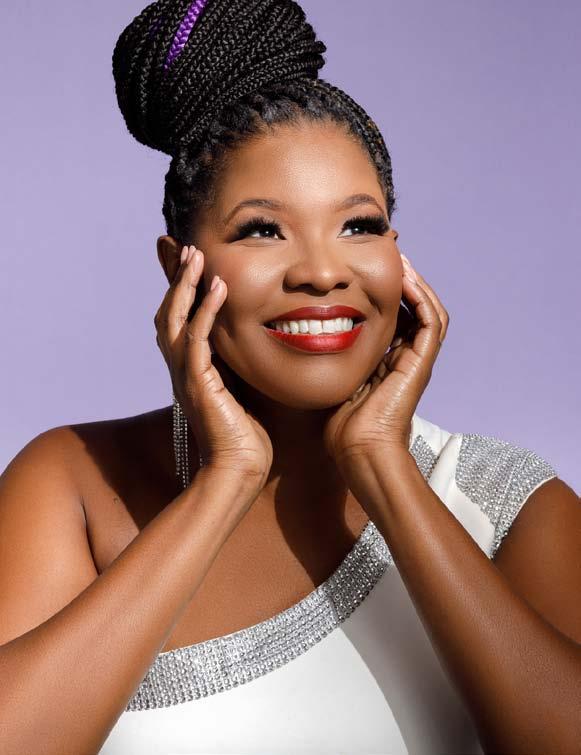
With contrasting journeys that reflect the diverse beauty of island life and opportunities, Sabrina Francis, Kye De Vere, and Kellie Cadogan tap into the zeitgeist of a modern Caribbean both influenced by and influencing the world.
kellie cadogan Barbados
The influences and imitation that pervade much Caribbean lifestyle has not always been a bad thing. Rihanna, the Caribbean’s biggest living music superstar, sings pop music when not being the boss of her cosmetics empire, Fenty Beauty.
In her countrywoman, Kellie Cadogan, we see a maturing career that looks, with one eye, to a future built by years of intelligently mastering her craft; and with another to a legacy that once positioned her to benefit from the “Rihanna effect” in 2005, when Barbados attracted the attention of a global music industry in search of new talent.
She began her recording career in 2002. And after three albums in 15 years, she admits that, “I


had a lot of space in between the music. I was still gigging, but it’s quite exciting to create projects. It’s a journey I truly enjoy.”
Her initial influences were Olivia Newton-John and the message-laden calypsos of her Bajan counterpart (and “pumpkin-vine family”) Stedson “Red Plastic Bag” Wiltshire, before falling under the spell of Jill Scott and Alicia Keys. Her catalogue spans genres.
“The first album was definitely jazz, the second one has some jazz and R&B,” she explains. “I think within recent times, the gospel — which is the last project — has really been coming out a lot more … The combination of gospel and jazz with some hints of R&B is a part of who I am. I’m at a stage now where I want to be able to do the music that speaks the messages that I believe.”
Not yet born to experience the odd and deadly 1983 American invasion of Maurice Bishop’s newly revolutionised Grenada, and not old enough to fully register the emotional impact of Hurricane Ivan in 2004, Sabrina Francis is a singer with an angelic voice.
Her concept recording and immersive live project, Meet Me at the Mango Tree, is a newly minted autobiography through song, reflecting her journey through the pathos of “disappointment, abandonment and heartbreak” toward a promising future. The lyrics of her recent single, “Magical Life”, tell the story:
I’m up in the middle of the night
Staring up at a window above me
But it does not lead outside
It’s a world on its own and I found it … I asked your world my questions and woke to no reply
Maybe this is my why and my answer
To start living a magical life.
She’s supported by the patronage of two Swiss expatriates resident in Grenada, along with their seemingly endless enthusiasm and broader metropolitan vision. Her mother, a calypsonian, migrated to seek better fortunes for their family.
With Francis and her siblings having to make ends meet, the Swiss couple heard her dulcet voice when she sang at their hotel Christmas party — then disappeared.
“I’m from the very north of the island — deep, deep country,” she explains.
After a year-long search, the patrons worked the system here and abroad with goals of developing her songwriting skills — placing her in a prime position among island singers, and sharing her talent across the Caribbean and the United Kingdom.
“At the top of our list right now is to break into the UK with Meet Me at the Mango Tree,” she notes. “We want to take 2024 to build on it even more, make it better, and tour with it in 2025.”
With over four dozen songs on streaming platforms, which she categorises as Afro-Caribbean pop, she can better gauge her catalogue and career.
“The early songs was just me still trying to find what I now consider my sound. And just because I lived life — I’m older, I’m more experienced — I’m more confident in the things that I do. I feel that the songs I create now are truly my songs, my message, and I stand in front of them proudly.”
 kye De vere Trinidad & Tobago
kye De vere Trinidad & Tobago
On a concurrent path of self-discovery in a (re)burgeoning career is Kye De Vere. Being the daughter of an English mother and Trinidadian father offers and demands another way of understanding Caribbean life and heritage.
Her southeast London accent dips in and out as this self-described “Tobago gyal” discusses the first turbulent 18 years of her life (half her life, really), moving back and forth between England and Tobago before settling permanently now on the island. It gives her an attitude of almost forced-ripe maturity and earned identity.
“As kids, we were out there, and of course, we were way too young,” De Vere says. She had to grow up fast and find her way in the world.
Her songcraft reflects these dual poles of “here” and “there”. Musically, she sits between modern island electronic beats and, lately, stirring soul belting. She began recording in 2016.
“The melody governs what I am feeling, how I am feeling, what I want to say, and then the lyrics kinda fit in,” she says of her writing process.
Recently, taking up the challenge to appear in a music industry showcase in Port of Spain (Trinidad), De Vere wowed the crowd with personal anecdotes set to melodies that channelled both Amy Winehouse’s honesty in tone and subject, and Lauryn Hill’s simple audacity.
But, shunning the mask of mimicry, she declares, “the more I got to know myself, I am learning my voice and putting my own twist on the thing! I just started experimenting and that helped me discover my own voice. That is still happening.”
The Caribbean character reflected in these three island songbirds is best witnessed live. The resilience; the persistence; the overcoming of obstacles by fate, by favour, by force of nature are part of the DNA of Caribbean lives. Discovering new voices in intimate spaces or on festival stages across the Caribbean is easier now, and these talented singer-songwriters ever reward us with their efforts to blend global sounds, local lore, and personal stories to make something new. n
These talented singersongwriters ever reward us with their efforts to blend global sounds, local lore, and personal stories to make something new

Piarco Plaza Bwia bl . QUTIES-0 (East)
Heart Land Plaza QUTIES-1 (Central)
One Woodbrook Place QUTIES-2 (POS)

Bar . Restaurant . Lounge
Come experience something new and different!
Build your platter and grill your food on our mini hibachi coal pot.
Wings | Pepper shrimp | Crab claws | BBQ Beef ribs
Jerk pork | Steaks | Garlic Lobster chunks
Burgers | Pasta | Salads | Desserts
Daily Drink specials | Shots
Signature Cocktails and much more!
Enjoy live sports & entertainment
Bring the entire family
Open Monday to Sunday from 11am (Including public holidays)





Lowlands Mall, Tobago
Lowlands Mall, Tobago
Piarco Plaza, Trinidad
Piarco Plaza, Trinidad
#15 Ariapita Ave, Trinidad
#15 Ariapita Ave, Trinidad
Duncan Village, South Trinidad
Duncan Village, South Trinidad
Hearthland Plaza, Central Trinidad
Hearthland Plaza, Central Trinidad
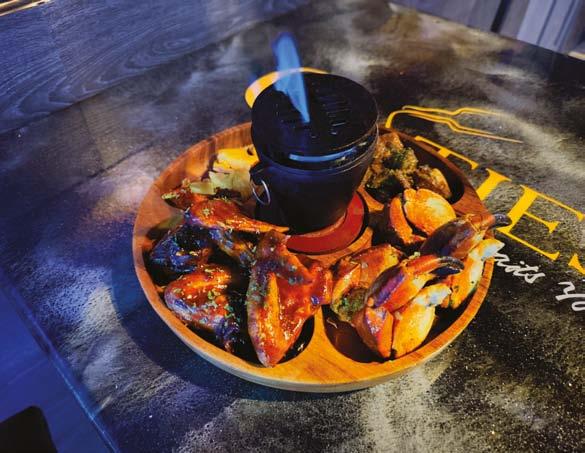
(86657) EXT 7065

Mall, Tobago Lowlands Mall, Tobago


Born in Guadeloupe to a white plantation owner and an enslaved Senegalese mother, the life of Joseph Bologne — better known as “Chevalier” and the “Black Mozart” — was nothing short of extraordinary. On the 225th anniversary of his death, James Ferguson revisits the story of this remarkable conductor, composer, violinist, fencer, and soldier that history almost forgot

The biopic Chevalier — which premiered at the Toronto International Film Festival in 2022 — is a glittering visual treat.
Amidst the sumptuous settings of King Louis XVI and Marie Antoinette’s court — where powdered wigs, tiaras, and exquisite gallantries barely conceal the ugliness of a decaying monarchy — it tells the story of the charismatic and ambitious Joseph Bologne.
The son of an enslaved woman from the French territory of Guadeloupe, he also happened to be a supremely gifted violinist and composer (a rival to Mozart), a celebrated fencer and duellist — and, of course, irresistibly good-looking.
At first sight, this seems improbable — a far-fetched rewriting of history that allows a free man of colour ( gens de couleur libres was the French term) to rub shoulders with the French aristocracy, and Marie Antoinette herself.
Records suggest that in pre-Revolutionary Paris, the Black and mixed-race population numbered a few hundred — almost all servants or exotic appendages to wealthy families. Slavery still flourished in France’s Caribbean colonies; the revolutionary uprising in Saint-Domingue was yet to begin; and draconian laws restricted the rights of mixed-race individuals. So the film’s depiction of Joseph’s stellar career — despite its frequent references to prejudice and racism — verges on the incredible.
And yet, strangely, the “real” Joseph Bologne achieved all the above — and much more.
Bologne was an accomplished musician, excelled at fencing, and mingled with the elites of the ancien régime. He also travelled to London to exhibit his skill with the épée (a duelling sword) in front of the Prince of Wales, joined the Revolution

in 1790, fought as a volunteer against the Austrians, and spent time in jail during the Terror.
Chevalier cannot include every detail of this remarkable life, but it succeeds in resurrecting its hero for a modern audience.
Joseph was born on Christmas Day 1745 in Basse-Terre, Guadeloupe, the illegitimate son of the white planter Georges Bologne de Saint-Georges, and Nanon — a 17-year-old slave from Senegal. Unusually, his father recognised him and brought him up, taking him to France in 1753.
After boarding school, Joseph attended a fencing academy in Paris, famously beating an older swordsman who had mocked him as “an upstart mulatto” in a much-publicised contest. This led to joining the king’s bodyguard and the adoption of the honorific title Chevalier de Saint-Georges. When his father died in 1774, Joseph — as an illegitimate son — was disqualified from inheriting the titles of nobility, but he and Nanon (who lived with him) were left an annuity.
Joseph was also a musical prodigy, and his ambitions lay in performing and composing with the various orchestras
patronised by the court and aristocracy. The opening scene of Chevalier shows Joseph engaged in an intense violin duel with none other than Mozart, the two exchanging solos like prototype rock stars.
This is pure licence, but Joseph’s violin concertos were well received and his performances with the Concert des Amateurs were sensational — “enrapturing especially the feminine members of his audience”, wrote one commentator.
He wrote operas and conducted symphonies by Haydn, some of these concerts attended by Queen Marie Antoinette. When the directorship of the Paris Opera became vacant in 1776, Joseph had high hopes of taking the post.
But in a development that was a brutal reminder of the status quo, three of the Opera’s leading ladies presented a petition to the Queen asserting that their “honour and delicate conscience” could never allow them to “submit to the orders of a mulatto”. Marie Antoinette, to Joseph’s chagrin, remained silent on the matter — and the office was given to a rival.
This snub, on explicitly racist grounds, seems to mark a turning point in Joseph’s career. He carried on performing for the nobility in salons and private concert
halls, and he continued to compose — but patrons died, orchestras were disbanded, and Joseph found himself reduced to living in a small apartment in Paris. Worse still, in May 1779 he was seriously assaulted one night by unknown assailants. Rumour had it that a jealous husband had discovered an affair and sought revenge.
Chevalier, for obvious reasons, makes much of Joseph’s love life — but here again there is a good deal of truth. His rejection of the influential diva MarieMadeleine Guimard’s advances is thought to have led to his setback at the Paris Opera, while his affair with the Marquise de Montalembert — a major thread in the film’s plot — may well have caused the mysterious attack ordered by her powerful husband. Whether the adulterous couple had a child, as depicted for dramatic effect, is doubtful.
Two trips to London and the impending Revolution awakened a political consciousness that Joseph had, until then, successfully suppressed. In England, he made contact with leading abolitionists and moved in liberal and expatriate circles supportive of France’s growing Republican movement.
He was abroad during the early months of the Revolution, but was in the northern city of Lille in the summer of 1790 — fencing, composing, and performing a new opera. Then in 1791, he volunteered to join the revolutionary National Guard, taking a senior role in the formation of a new “Free American Legion” comprising mixed-race volunteers — mostly refugees from Saint-Domingue, which by now was in the throes of a bloody uprising.
the myth. Writing in 2020 in The New York Times, Professor Marcos Balter of Columbia University observed accurately that, “What is known is scantily and contradictorily documented, when not purely anecdotal.”
Part of the blame, he says, must lie with the 19th-century novelist Roger de Beauvoir, whose 1840 potboiler Le chevalier de Saint-Georges “intertwined fact and fiction so seamlessly that many

This latter period of Joseph’s turbulent life is frustratingly less documented than the earlier decades, so does not feature in Chevalier (which ends with the rising tide of street violence that led to the storming of the Bastille in July 1789).
The confusing near-anarchy that swept through revolutionary France claimed many victims, and Joseph came close to the guillotine in 1793 on vague charges of sympathy for the ancien régime Now, tellingly, he signed correspondence as “Georges” — dropping aristocratic trappings in the new age of equality.
After some years in which he found some consolation in composing, Joseph died in Paris 225 years ago, in June 1799. He was 53. He did not live to see the rise of Napoleon Bonaparte, nor Haiti’s rebirth out of its decade-long struggle for freedom or — less auspiciously — Bonaparte’s reimposition of slavery in Guadeloupe and elsewhere in 1802.
Piecing together Joseph Bologne’s life and career is an exercise in disentangling the man from
a major figure in contemporary Parisian cultural circles.
“But when we study this repertoire,” says Professor Balter, “his name is nowhere to be seen. Then one has to ask oneself, why has this person specifically been erased from these facts?” Look no further than the “Eurocentric legacy” that determines who is considered important for posterity.
Was Joseph written out of his rightful place in the history of classical music by design, or was he a victim of the chaotic period of French history from the end of the monarchy and through the turbulent Napoleonic regime?
Napoleon, described by Marlene L Daut in a recent New York Times editorial as “a racist and genocidal warmonger”, was evidently not someone who would have encouraged a positive evaluation of Joseph’s musical legacy. Two decades of obscurity after Joseph’s death may have meant he then became more permanently neglected.
Until now, that is.
Chevalier, for all its embellishments and flights of fancy, is a valuable and watchable account of a life led in one of the most dramatic periods of Euro -
Was Joseph written out of his rightful place in the history of classical music by design, or was he a victim of the chaotic period of French history from the end of the monarchy and through the turbulent Napoleonic regime?
of its fabrications gradually found a place in Bologne’s assumed biography”.
Perhaps this sensationalist account deterred others from producing more measured assessments of Bologne’s achievements. But there is also a suspicion that the racism that blocked Joseph’s appointment to the directorship of the Paris Opera also stood in the way of a proper appreciation of his talents as a composer and musical performer.
As an innovative composer of string quartets, a noted conductor, and somebody with the status to commission symphonies from Haydn, he was clearly
pean — and Caribbean — history. Two revolutions, in France and Haiti, marked a seismic shift in Europe and the Americas, and the film brings into focus the very moment when the old order is about to disappear.
The film sympathetically explores Joseph’s status as a person of colour — inspiring but ultimately vulnerable in a deeply racist society. The “Black Mozart” is probably hyperbole, and experts disagree on his prowess as a composer. But — full of delicious spectacle — Chevalier is a worthy exploration of prejudice, and an introductory insight into the dying days of the French monarchy. n









Welcome Home to
The NEW way to be entertained!
Use your personal device to stream Blockbuster movies, TV shows, games and more Caribbean content while in the air.




Unable to connect
1. Switch Wi-Fi off and on
2. Power the device off and on and repeat step 1
Unable to view content
1. Close and restart the browser and type www.caribbean-airlines.com
2. If this does not work, try an alternate browser and type in www.caribbean-airlines.com
3. Power the device off and on and try steps 1 and 2 again
Note: Chrome is the recommended browser for laptops.
By using the system, you accept the following terms and conditions:
• *Content is available only on flights over two hours.
• Content is available only during flight.
• Access to content is only available above 10,000 feet.
• Access to content will stop before the end of the flight
• You may not have sufficient time during the flight to watch the entirety of some content.
Viewing information:
Please choose your viewing appropriately Note: Some content may not be suitable for younger viewers, so please choose appropriate content where children will be watching
Please ensure headphones are used at all times for playback of media content, unless muted.
• It may take a short time for a video or other content to start.
• Please note that we are not responsible for any data loss or damage to devices that may occur while/after using our services.
• Onboard battery charging facilities are available.
Safety information:
• We may pause or stop our inflight entertainment system for safety or other reasons.
Security information:
• This service is provided using wireless LAN technology
Please be aware that it is a public network.
• It is each user s responsibility to have an up-to-date security system (e.g. firewall, anti-virus, anti-malware) for their device.
 GRAND CAYMAN
Dominica
Curacao
Ogle
Caracas
St Kitts
Fort Lauderdale
GRAND CAYMAN
Dominica
Curacao
Ogle
Caracas
St Kitts
Fort Lauderdale
Word search
authentic fraternity secure television communities epicentres paradoxes devise migratory henna Dwayne Bravo legendary boisterous
vernacular provocative cake mehndi Indian Arrival branches ecology reforestation acreage postcard reparations horizon peace
by www.sudoku-puzzle.net
Fill the empty square with numbers from 1 to 9 so that each row, each column, and each 3x3 box contains all of the numbers from 1 to 9. For the mini sudoku use numbers from 1 to 6.
If the puzzle you want to do has already been filled in, just ask your flight attendant for a new copy of the magazine!








